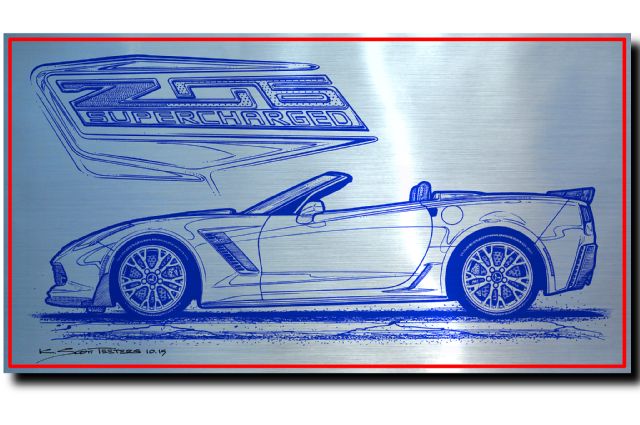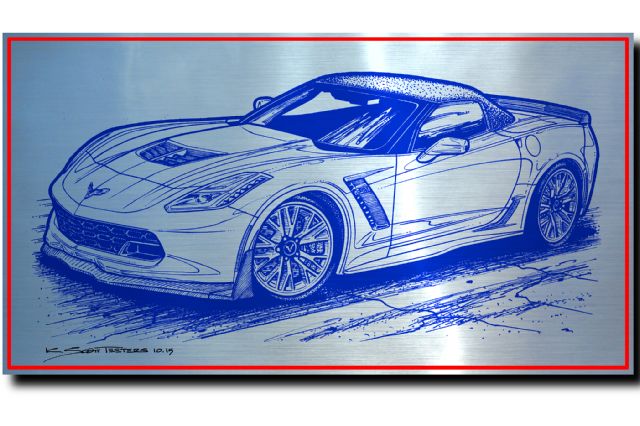 Words and Art by K. Scott Teeters as written for Vette Magazine and republished from SuperChevy.com
Words and Art by K. Scott Teeters as written for Vette Magazine and republished from SuperChevy.com
Illustrated Corvette Series No. 225
Sometimes we have to remind ourselves that all Corvettes were roadsters for the first 10 years of production. After all, when Harley Earl first conceived his Chevrolet sports car, most sports cars were open roadsters. Oh, there were coupes, but there was nothing like motoring on the open road with the top down and the wind in your hair. Ever since 1963 there’s always been a “coupe” Corvette. Roadsters went away from 1976 to 1985 but have been back ever since 1986.
Convertibles are a delight, but when it comes to a modern, powerful sports car with gobs of torque and grip, a stiff structure is essential; otherwise, you have a wiggle-wagon that wants to go everywhere. The C5 Z06 model was created in 2001 because it was discovered that the bolted and bonded hardtop on the C5 roadster made the car stiffer than the coupe! For the C6 design, the aluminum frame was exclusive to the Z06 and was significantly stiffer than the coupe, so much so that the 638-horsepower LS9 was right at home in the Z06’s frame.
Meanwhile, Corvette engineers and designers are working with the C6.R racing team to help with the racing program, as well as learn how to make the C7’s aluminum frame even better! Creating a very rigid frame is usually a matter of tying the front and rear parts of the frame that cradle the car’s independent suspension together, by connecting them via the roof structure. From the start, the all-aluminum frame was designed to not only be a roadster, but a Z06 roadster. The C7’s frame is truly a work of art. The frame weighs almost 100 pounds less than the C6 steel and aluminum structure and has 57 percent more torsional stiffness.
The all-aluminum frame is an elaborate concerto of hydroformed aluminum, high-pressure die castings, extruded parts, specially designed load-bearing brackets, hollow castings, hollow-cast crossmembers, and braces, all held together with bonding material, welding, and rivets. The C6 frame was also hydroformed, but the thickness was a uniform 4-millimeters thick. The C7’s frame thickness varies depending on need, ranging from 2-millimeters to 11-millimeters thick.
The C7’s framerails are designed to absorb crash energy and have special castings for firm, exact steering and suspension mounts. This is the most complicated frame to ever be used in a Corvette. The end result is a car that does not need to be in a coupe configuration in order to be as rigid as needed for a modern high-performance sports car with gobs of horsepower, torque, and tire grip – the likes of which would tear a lesser car apart in no time.

